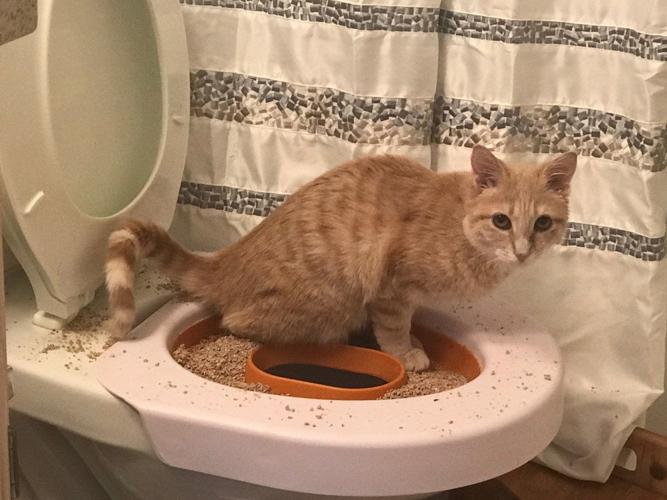Avoid Clogs and Damage: Never Flush Cat Poop Down Your Toilet - Professional Insights
Avoid Clogs and Damage: Never Flush Cat Poop Down Your Toilet - Professional Insights
Blog Article
How do you really feel in regards to How to Dispose of Cat Poop and Litter Without Plastic Bags?

Intro
As pet cat owners, it's necessary to bear in mind how we deal with our feline close friends' waste. While it may appear hassle-free to purge pet cat poop down the bathroom, this practice can have harmful repercussions for both the environment and human health and wellness.
Alternatives to Flushing
Luckily, there are much safer and a lot more accountable methods to take care of pet cat poop. Think about the adhering to choices:
1. Scoop and Dispose in Trash
The most common method of dealing with feline poop is to scoop it right into a biodegradable bag and throw it in the garbage. Make sure to use a committed clutter scoop and deal with the waste quickly.
2. Usage Biodegradable Litter
Go with biodegradable feline litter made from products such as corn or wheat. These clutters are eco-friendly and can be safely dealt with in the trash.
3. Bury in the Yard
If you have a yard, take into consideration burying feline waste in an assigned location away from vegetable yards and water resources. Make certain to dig deep enough to avoid contamination of groundwater.
4. Set Up a Pet Waste Disposal System
Invest in an animal waste disposal system especially made for feline waste. These systems use enzymes to break down the waste, minimizing smell and environmental effect.
Health Risks
In addition to ecological worries, flushing cat waste can also posture health and wellness threats to humans. Feline feces may contain Toxoplasma gondii, a bloodsucker that can create toxoplasmosis-- a possibly severe illness, especially for pregnant females and people with weakened body immune systems.
Environmental Impact
Purging cat poop presents dangerous pathogens and bloodsuckers right into the water supply, presenting a significant danger to marine environments. These contaminants can negatively influence marine life and concession water top quality.
Final thought
Responsible animal ownership extends beyond providing food and sanctuary-- it additionally involves proper waste management. By refraining from purging cat poop down the toilet and selecting alternate disposal methods, we can lessen our ecological impact and secure human health and wellness.
Why Can’t I Flush Cat Poop?
It Spreads a Parasite
Cats are frequently infected with a parasite called toxoplasma gondii. The parasite causes an infection called toxoplasmosis. It is usually harmless to cats. The parasite only uses cat poop as a host for its eggs. Otherwise, the cat’s immune system usually keeps the infection at low enough levels to maintain its own health. But it does not stop the develop of eggs. These eggs are tiny and surprisingly tough. They may survive for a year before they begin to grow. But that’s the problem.
Our wastewater system is not designed to deal with toxoplasmosis eggs. Instead, most eggs will flush from your toilet into sewers and wastewater management plants. After the sewage is treated for many other harmful things in it, it is typically released into local rivers, lakes, or oceans. Here, the toxoplasmosis eggs can find new hosts, including starfish, crabs, otters, and many other wildlife. For many, this is a significant risk to their health. Toxoplasmosis can also end up infecting water sources that are important for agriculture, which means our deer, pigs, and sheep can get infected too.
Is There Risk to Humans?
There can be a risk to human life from flushing cat poop down the toilet. If you do so, the parasites from your cat’s poop can end up in shellfish, game animals, or livestock. If this meat is then served raw or undercooked, the people who eat it can get sick.
In fact, according to the CDC, 40 million people in the United States are infected with toxoplasma gondii. They get it from exposure to infected seafood, or from some kind of cat poop contamination, like drinking from a stream that is contaminated or touching anything that has come into contact with cat poop. That includes just cleaning a cat litter box.
Most people who get infected with these parasites will not develop any symptoms. However, for pregnant women or for those with compromised immune systems, the parasite can cause severe health problems.
How to Handle Cat Poop
The best way to handle cat poop is actually to clean the box more often. The eggs that the parasite sheds will not become active until one to five days after the cat poops. That means that if you clean daily, you’re much less likely to come into direct contact with infectious eggs.
That said, always dispose of cat poop in the garbage and not down the toilet. Wash your hands before and after you clean the litter box, and bring the bag of poop right outside to your garbage bins.
https://trenchlesssolutionsusa.com/why-cant-i-flush-cat-poop/

I found that review on How to Dispose of Cat Poop and Litter Without Plastic Bags while browsing on the internet. If you enjoyed reading our article if you please do not forget to share it. Thank-you for your time spent reading it.
Services Report this page